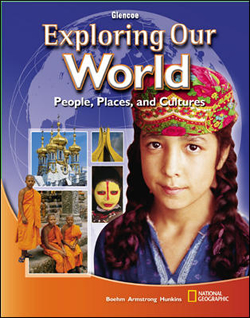
Exploring Our World: People, Places, and CulturesChapter 6: The United States and Canada TodayChapter OverviewsThe United States and Canada have free market economies, and each country contains different economic regions that produce goods and services. The U.S. Northeast has large urban areas and is a center of business and trade; the South's rich soil meant that agriculture has always been important to its economy. Like the South, the Midwest relied historically on agriculture, and later it shifted into a focus on manufacturing; over time, however, many of these factories closed down. The Interior West's scenery makes it a draw for tourists, and fertile areas of the Pacific Coast focuses on fruits and vegetables, fish, and timber. In Canada, the fishing industry was important to the Atlantic Provinces, although in recent years overfishing has become a major concern. Finance and business are important to the large cities in the Central and Eastern regions, while ranching and farming, especially wheat, are keys to the economy of the West. The Northern one-third of Canada has many mineral resources, including gold and diamonds. The two countries are important trading partners and goods and services flow freely between them. While the United States has an international trade deficit, Canada enjoys a trade surplus. The countries cooperated, in the wake of the terrorist attacks of September 11, 2001, in increasing security along their common border. They have also cooperated to address environmental issues faced by the region, including acid rain and the lowering water levels of the Great Lakes. Both countries have made progress in cleaning up their air and water. Still, pollution remains a problem. |  |















